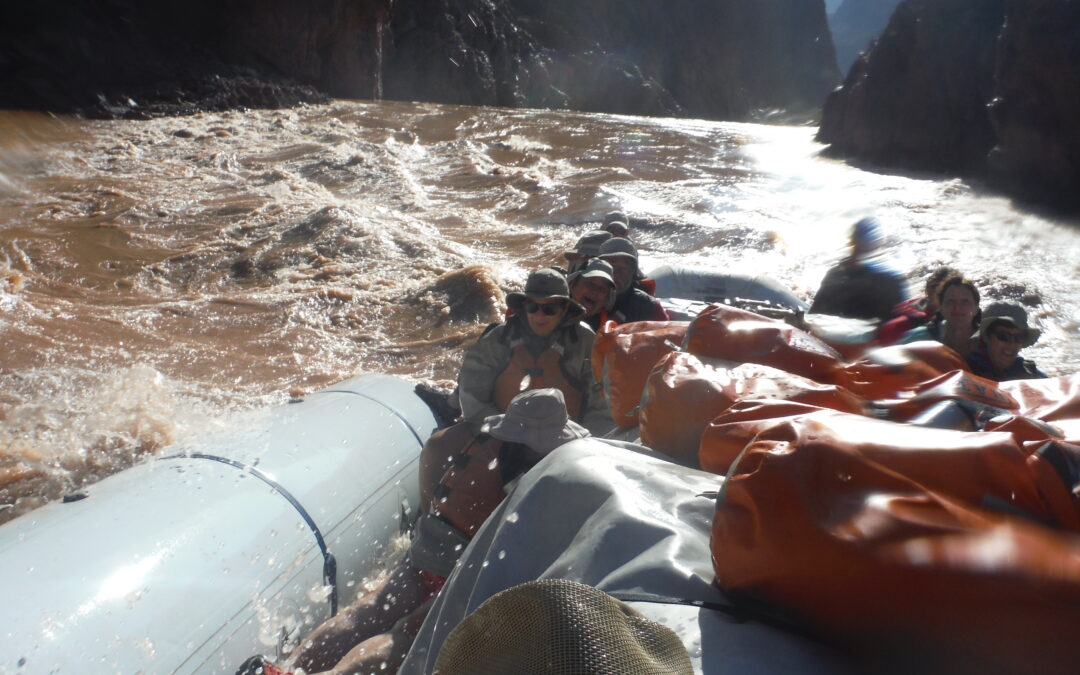Grand Canyon rafting trips in July and August amazing—here are 5 reasons why! Perhaps our most asked question in the Hatch office is:...


While exploring Grand Canyon on your next Colorado River trip, you will experience the blood pumping excitement of world famous rapids like Soap Creek, Crystal, and Lava Falls. Rapid is a term you will hear over and over on your trip. But you will also hear a lesser known term referring to a different type of whitewater – a riffle.
What is the difference between a riffle and a rapid? Let’s explore some of the basic differences so you can be in the know before your next Grand Canyon excursion.
First of all, whitewater sections on the Colorado River are rated differently than elsewhere. They are assigned a difficulty level on a scale of 1-10, with 10 being the most challenging. In the 188 river miles from Lee’s Ferry to Whitmore Wash, you will encounter rapids that tip the scale on both ends, with ratings as low as 2 and up to about 10, depending on water level.
Consider a riffle like a baby version of the more difficult rapids you’ll encounter through Grand Canyon. Despite their baby status, riffles usually have a rating of about 2 and can still take you for a decent ride. Or at least warm you up for the bigger thrills.
A riffle in the Grand Canyon occurs when a water source flows down a tributary and merges with the Colorado River. Debris is built up at the confluence and causes a faster flowing, more turbulent section of water than usual – this is our riffle.
The first notable riffle on the Lee’s Ferry to Whitmore Wash stretch is Paria Riffle. It’s only about .2 river miles into your trip where the Paria River meets the Colorado. This is an excellent place to get your feet wet and prepare for the larger rapids to come. The confluence of these rivers can also be a brilliant sight when the two water sources are startlingly different colors and mix together as they move down river.
The next riffle you will encounter is the most infamous. Brown’s Riffle, located just below Soap Creek Rapid at about 12.1 river miles, memorializes F.M. Brown who drowned there in 1889. The lesson here being although a riffle is smaller than a rapid, it is still a powerful force of nature. Always wear your life vest!
The last significant ripple along this stretch is referred to simply as 73.6 Mile Riffle. By this point in the trip you’ll have no problem hanging back and enjoying the minor bumps and jostles. Now that you’re more familiar riffles, let’s discuss rapids and what to expect on your trip through Grand Canyon.
Typical rapids in rivers across the globe are caused by five factors: water, steep gradients, harder rocks, softer rocks, and time. As water runs faster down these steeper sections, the softer rocks erode more quickly than the harder rocks causing a variance in water levels and speeds. The water crashes against the less eroded rocks or slower currents of water and cause the famous rapids we love. The vast majority of the rapids in Grand Canyon were created by a unique mixture of this ‘differential erosion’. The others were created by another important natural process – flash flooding.
There are hundreds of side canyons and drainages that bring water into the Colorado River. With a few exceptions, many of these side canyons are dry year-round, except during rainstorms. During heavy rains, flash floods can carry massive amounts of debris, rocks, and large boulders into the Colorado River. All this debris can dam up the canyon and force the water to slow and pool at the top of the rapid. As the water leaves the pool, it speeds up through the boulder-choked areas. Finally, the fast moving water collides at the bottom of the rapid with the slow current of the river’s regular flow. This causes one last upward splash of water.
Although changes still occur year after year, most of the rapids and riffles we know today were formed long ago. Lucky for us! We now get to enjoy the incredible result of the Colorado River’s journey across time through Grand Canyon.
Now that you know the difference between a riffle and a rapid, reserve your rafting trip today and experience world class whitewater for yourself!
If you’re rafting when there are monsoons in Grand Canyon, you might experience something incredible Imagine this: It’s your second day in the canyon and you are overwhelmed by how monumentally tall the walls around you seem to have gotten in such a short time. In the...
Bugs in Grand Canyon! With Halloween at the end of the week, it will be hard to go anywhere without being inundated by pumpkins, spider webs, costumes, and candy. In the spirit of the season, we thought you might like to know a bit about some of the more...
Grand Canyon Q&A: A Conversation with 7th Graders This past week, I got a call from our office asking if I’d be willing to talk to some seventh graders about the Grand Canyon. It was definitely an unusual request for me, but of course I said yes. When I...